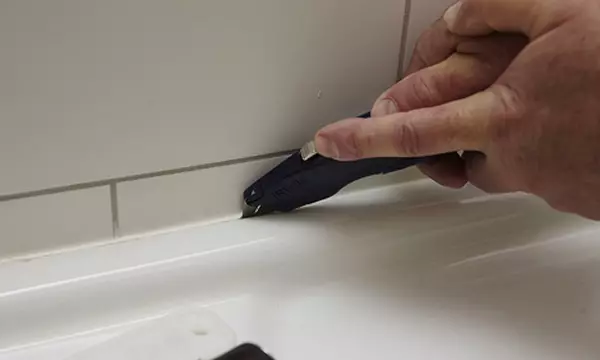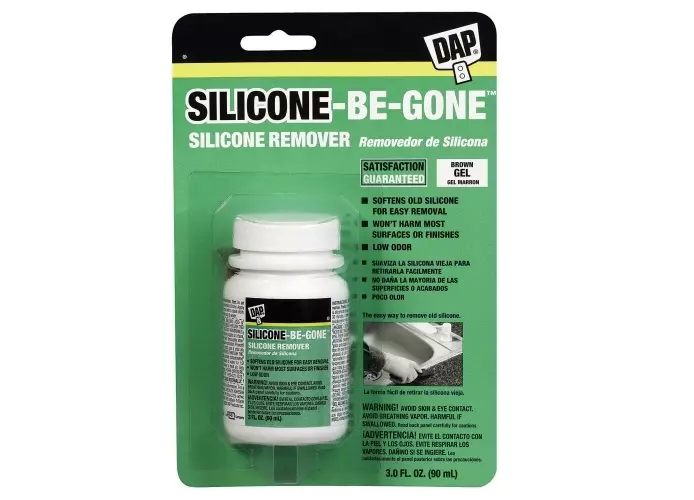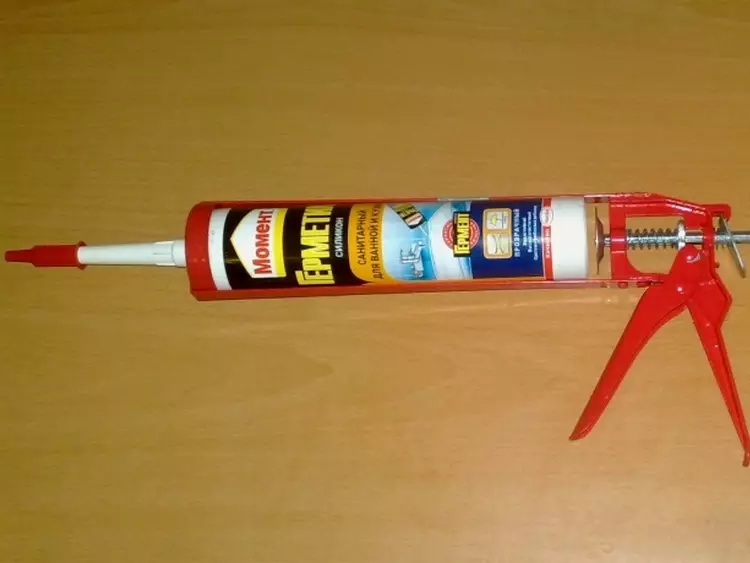
The bathroom in many characteristics differs from all other premises in the house. It supports a special microclimate, the main features of which are the increased humidity of the air and the temperature differences. Therefore, special finishing and building materials are used to repair the bathroom, intended for use in rooms with high humidity levels and with a changing temperature mode.
This also applies to sealing compositions, without which it is not to do in the process of repairing the bathroom and bathroom. For the bathroom, you should choose a special sanitary sealant based on silicone. The fact that this is for the tool and how it needs to be used in detail in this article.
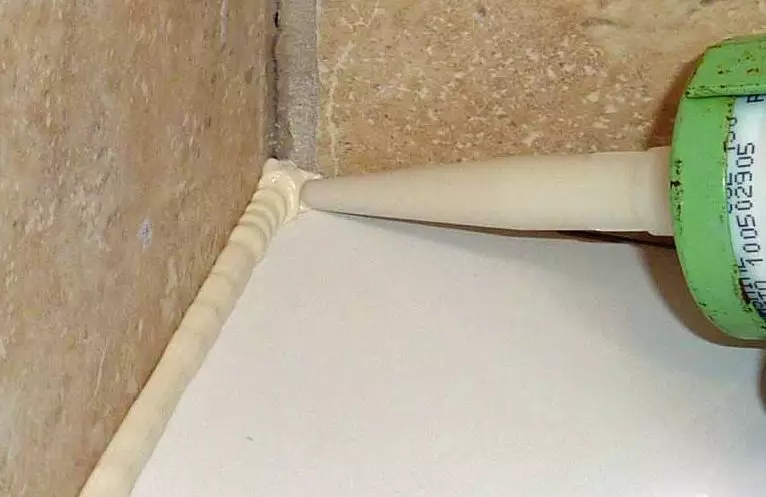
Features of silicone sanitary sealant
The main operating component of the sanitary sealant is silicone. In addition to it, an adhesion amplifier, a volcanizer, plasticizer and various additives, including dyes and fungicides, are usually present in the sealing agent.
Silicone sanitary sealant has excellent performance, namely:
- Resistance to ultraviolet radiation, which allows it to be used to work on surfaces exposed to sunlight;
- High degree of strength and at the same time good elasticity - the sanitary sealant is obliged by the presence in its composition of silicone related to silicone compounds;
- Resistance to the effects of aggressive chemicals, which are often present in the composition of cleaning products for plumbing;
- Resistance to the appearance of fungus, mold and insects - for this property of silicone sealant is distinguished by special fungicidal additives.
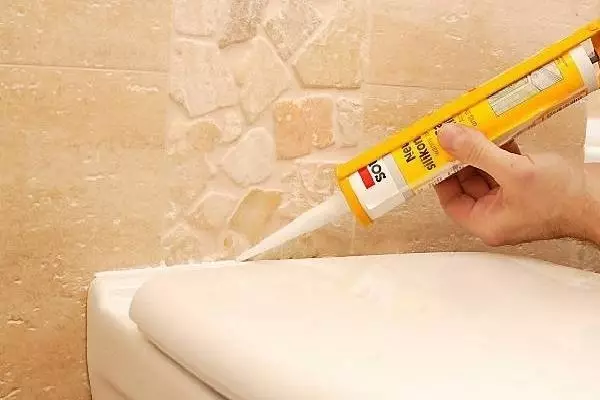
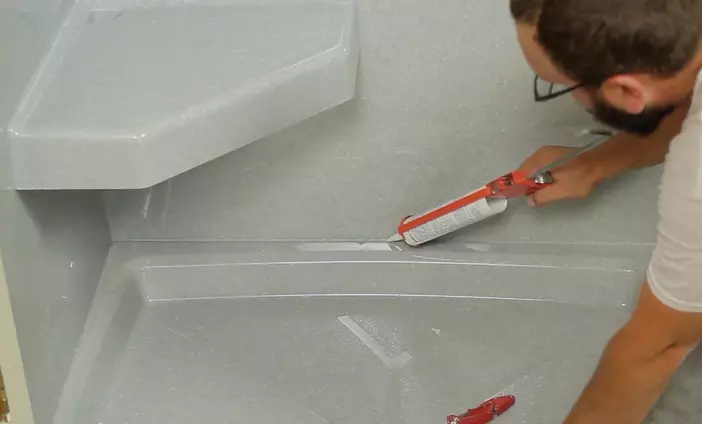
Silicone
High-quality sanitary sealant is at least half of the half must consist of silicone rubber. In everyday life, one of two varieties of silicone sealants is usually used - neutral or acidic. Repair specialists advise choosing neutral sealant to process surfaces in the bathroom. It costs more, but harmless to humans and practically does not smell. In addition, the neutral sealant interacts perfectly with all kinds of materials, even with such delicate as marble. It is used not only for sealing, but also for gluing various elements.
Article on the topic: Plasterton decoration: Useful tips
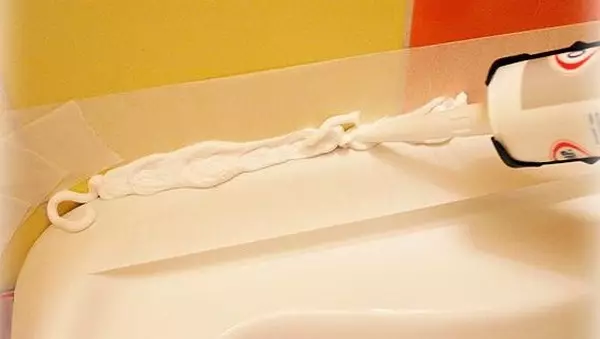
Transparent
Transparent silicone sealant is usually used to work with a separate group of materials - transparent and translucent glass and a cafeter. Since today the glass plumbing (sinks, shower cabins, etc.) is very popular, then transparent sealing compositions are in great demand. In the bathroom, a transparent sealant can also be used to seal the seams between the fragments of the glass mosaic.
In addition, this type of sealant is used to arrange aquariums when installing double-glazed windows and transparent partitions.
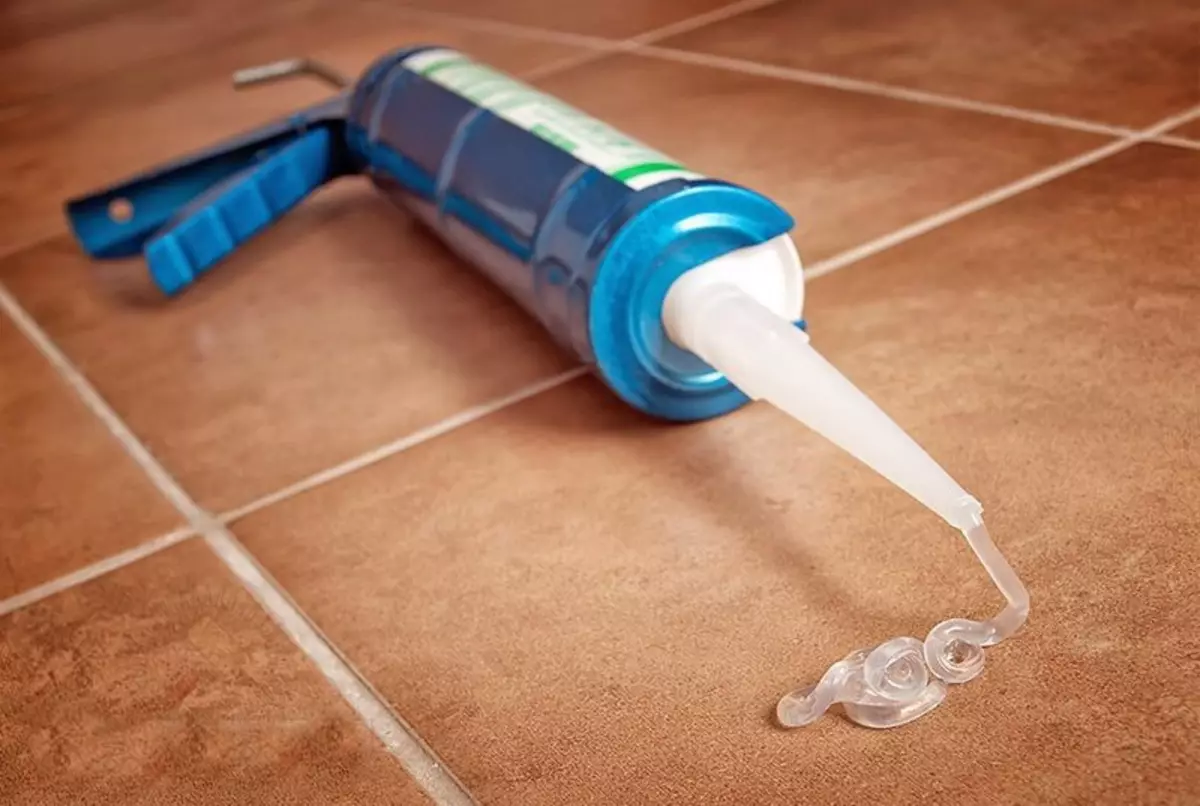
Tips for choosing
- When buying a sanitary silicone sealant, carefully examine its composition: about 90% should be silicone rubber and filler (at the same time, and the other should be approximately equally). The remaining 10% is fungicidal additives, plasticizers, catalysts, etc.
- For the production of high-quality silicone sealant, more expensive materials are used and, as a result, a higher price is prescribed for it. Therefore, buy sanitary sealant is not cheaper than 150 rubles for standard packaging.
- If there is a marking "A" on the packaging with a sanitary sealant, this means that it refers to acid sealing compositions. Such sealants have a sharp smell of vinegar. When working with them, it should be protected by the skin of the hands and the respiratory tract. In addition, acid sealants can not be used for all types of materials.
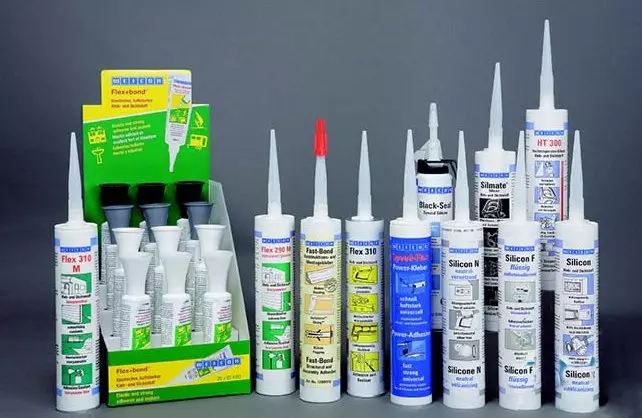
Instructions for use
In the bathroom, silicone sealant is most often used to seal the seam between the wall and the font, the joint processing between the parts of the shower cabin, sealing the curtains for the bath and other similar works. Apply the sanitary sealant is simple enough, you only need to follow a certain sequence of actions.
- First we carry out preparatory work: we clean, seal and dry the working surface.
- Then we are arming with painting scotch tape and take the places that need to be protected from the sealing agent. So that the seams turned out to be smooth and neat, the painting tape should be pasted as close as possible to the junction.
- Standard packaging for silicone sealant is a tuba that is refilled into a special gun. After that, it is necessary to trim the nose of the tube at a certain angle - so that the diameter of the opening coincides with the width of the seam.
- We insert the tip of the tube as close as possible in the gap and evenly distribute the sealant throughout the seam.
- If the seams turned out not very smooth, then until the sealant grabbed, it can be corrected by a rubber spatula or a lubricated soap with a finger.
- Then we tear the strips of the painting tape and wait for the drying of the composition.
Article on the topic: Side sizes: Width and Panel Length
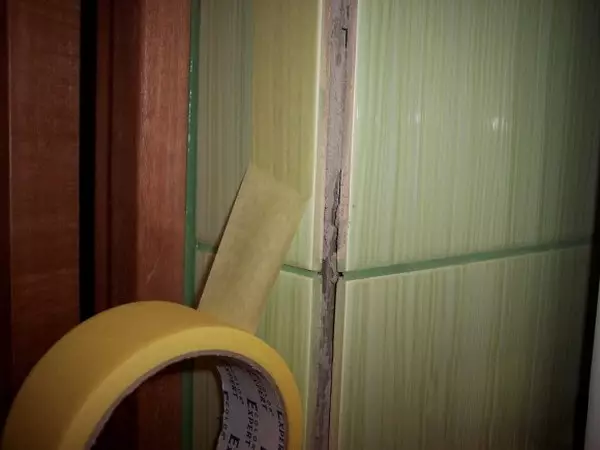
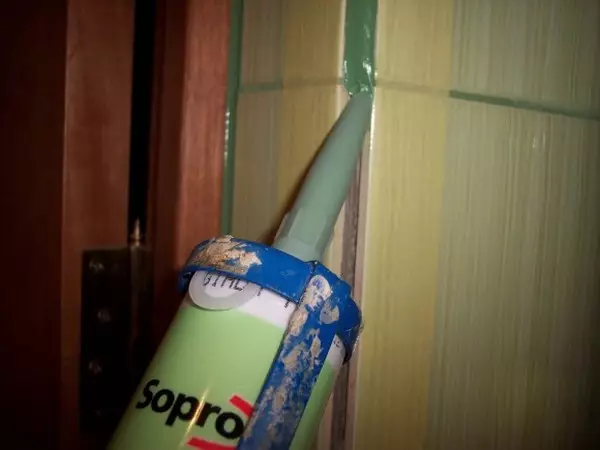
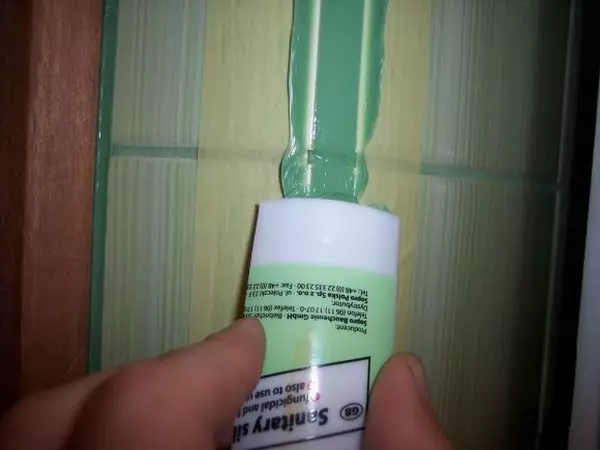
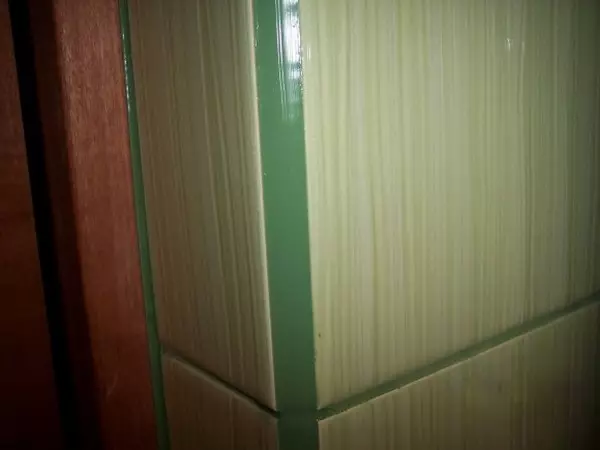
How much dries?
Different manufacturers indicate a different duration of drying sanitary silicone sealants.
The top layer is frozen after a few hours after applying, but for a complete drying of the composition should pass at least a day. All this time, fresh seam must be protected from water from entering water.
According to the observations of specialists, the drying rate of the sealing composition directly depends on the seam thickness. On average, it is 2 mm per day.
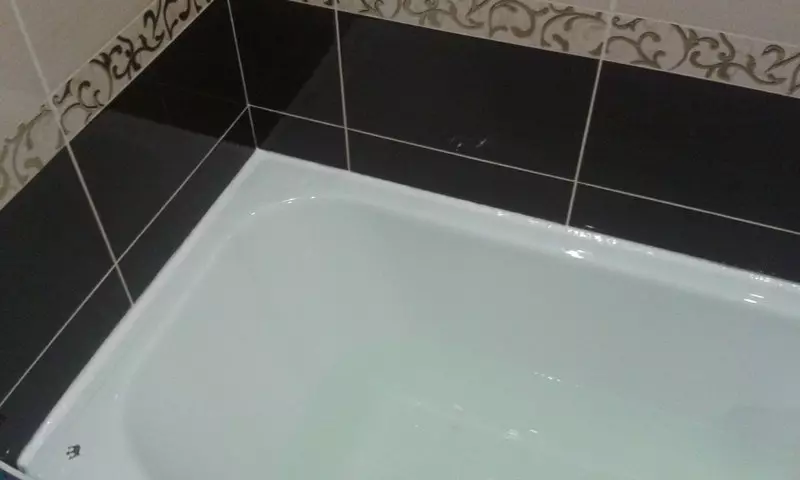
Removal
Remove sanitary silicone sealant from various surfaces in two ways: mechanically or using special cleaning products.
The first way can be used in case you need to remove fresh, not yet frozen silicone sealant. It is possible to just pick up the blade of the knife, and then gather your hands. With the help of a sharp knife, you can scrape and the thick layer of the old, has long grabbed the sanitary sealant.
If the layer of silicone sealant is thin enough, and does not give in to mechanical exposure, solvents and washes for silicone will come to the rescue. Suitable as ordinary acetone or white spirit, and specialized means that can softening silicone without damaging the surface. These funds include, for example, Silicone Remover, Sili-Kill and Permaloid.
